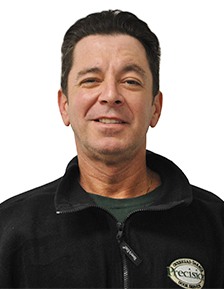Garage Door Mechanics FAQs





WITH 1,601 REVIEWS
Click Here To Book Online Now





CLICK
To view local phone numbers
Garage door mechanics help your door stay on track, literally. Read these garage door FAQs to learn more!
What's a torsion spring system?
Torsion springs are located horizontally above the opening of your garage door. The spring is slid onto a torsion tube and wound up with a tremendous amount of tension. As the garage door closes, cables attached to the bottom corners of the door cause the spring to wind up and create stored energy. When the garage door is opened, the spring unwinds and the stored energy lift the door up.
What's an extension spring system?
An extension spring system consists of springs that are attached to pulleys and cables which are then attached to the bottom corners of the garage door. In the closed position, the springs are stretched, and when the door is opened, the energy in the extended springs lift the door.
What's better: torsion or extension?
Often, coated torsion springs can cost more than extension springs, but they do tend to last longer. A torsion spring is also safer than extension springs because it is self contained, and if it breaks, it won’t go flying across the garage.
Can I install/replace a torsion spring myself?
Not recommended. A torsion spring is under a tremendous amount of tension, so without training you should never attempt to install or replace a torsion spring by yourself.
Can I install/replace an extension spring myself?
You can, but an extension spring can injure an untrained individual trying to install or replace an extension spring.
Do my extension springs need safety cables?
Yes. Safety cables run through the springs and are attached to the rear of the track and/or wall at each end to help keep a broken spring contained if it were to break. When the garage door is closed, the extension springs are under a lot of tension, so safety cables can eliminate the risk of injury.
How do I know if my springs are working properly?
You will know that your springs are working properly if your garage door will balance 1/3, 1/2, and 3/4 of the way open and lifts with minimal effort.
What are the different types of rollers for garage doors?
The rollers of your garage door move along the track as the door opens or closes. They can impact a door’s operational smoothness or noise level. Steel rollers create a loud garage door because of the metal on metal contact with the track. Plastic rollers are not as loud, but there is no bearing so there’s nothing to lubricate to help the door operate smoothly. Nylon rollers are quiet as the roll along the track. They have sealed bearings so they’ll never need lubrication.
Why is my garage door suddenly noisy?
Your garage door may be noisy because it needs to be lubricated or it has worn or damaged parts, such as the pulleys or rollers.
What are the different types of pulleys found in garages?
Pulleys work together with the extension springs to lift the weight of the door. There are three different types of pulleys that homeowners will find in their garage. A press fit pulley is two pieces of metal pressed together to form the working piece. It is likely to split over time due to the pressure from the cables. A riveted steel pulley is similar to a press fit pulley with the addition of rivets for additional strength. Because it’s not one solid piece of equipment, the pulley can eventually split. It has bearings inside which will also eventually wear. A solid cast iron pulley has a sealed bearing and often lasts twice as long as a riveted pulley and won’t split as it is made from a single piece of iron.
What size track do I need?
The track size you need will depend on the garage door and the dimensions of your existing garage.
What is a track radius?
The track radius is the curved part of your track that transfers the door from the vertical position to the horizontal position (or vice versa). Typically, the larger the radius, the smoother and more quietly your door will travel from open to close.
What are safety cables?
Safety cables run through the springs in an extension spring system to help contain the springs in the event that they break.
What are the different track options for garage doors?
The different sizes are 10R, 12R, 15R, 20R, 32R, as well as low headroom track and high lift track.
Office: (203) 443-8569
30 Old Mill Plain Rd
Danbury, CT 06811
License
CT Home Improvement Contractor License:HIC.0629893












